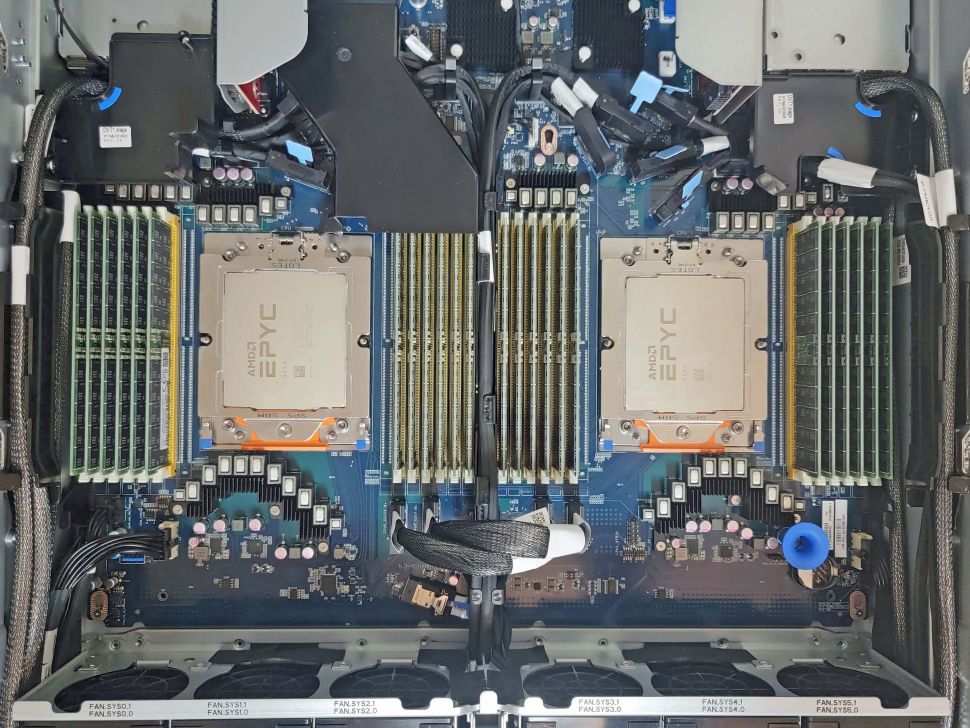AMD scores more EPYC supercomputer wins.
The Top 500 list of the fastest supercomputers in the world was released today. While there aren’t any unexpected changes to the leadership spot — the AMD-powered exascale-class Frontier still ranks as the fastest system in the world while Intel grapples with delays for the Aurora system — the list does reveal that AMD continues to take over more of the top spots. AMD also comprised 84% of the new systems added to the list.
This release finds AMD powering 101 of the systems on the Top 500, a 38% increase year-over-year on a list that typically sees a somewhat slow rate of change. More importantly, many of these AMD-powered systems are at the top of the list, with AMD now holding four of the top ten spots, and 12 of the top 20. The increased number of AMD systems on the list builds on AMD’s strong showing when it jumped to 93 spots in the top 100 when it was last released in June.
AMD is fresh off the release of its EPYC Genoa processors, which we recently reviewed, finding that the chips outclass Intel’s incumbent Ice Lake in every type of workload, not to mention while being drastically more power efficient — both of which are key criteria for the world’s fastest machines. Moreover, AMD’s performance gains often come from an incredible core count advantage: The highest-end Genoa processor has more than twice the number of cores of the Ice Lake Xeons. AMD’s advantage should continue for at least the next Intel CPU cycle, too, as Genoa currently has 60% more cores than the as-yet-unreleased Sapphire Rapids, which is rumored to peak at 60 cores.
As you’d expect, some of the new entrants leverage AMD’s newest silicon. For example, Shaheen III, the fastest supercomputer in the Middle East, leverages the fourth-gen EPYC Genoa silicon.
Not all that glitters is new silicon, though: Another new entrant from HPE is surprisingly powered by AMD’s second-gen EPYC Rome silicon. The supercomputer for the Mohamed bin Zayed University of Artificial Intelligence (MBZUAI) comes packing 384 Nvidia A100 GPUs paired with AMD’s previous-previous-gen silicon, showing that AMD can also continue to carve out new wins even with its older kit.
Speaking of GPU accelerators, the Top 500 list now has nine systems powered by the AMD Instinct accelerators, an increase of two over the last list. It’s obvious that AMD hasn’t had as much success with its Instinct lineup of accelerators as it has had on the CPU side of the house, but its move to multi-chip Instinct MI200 GPUs could help it employ the same techniques it did with EPYC to begin to gain more traction.
Notably, AMD’s MI250X accelerators power the world’s fastest supercomputer, Frontier, and also rank high on the Green 500, which is the list that comprises the 500 most efficient supercomputers in the world. AMD’s CPUs also now power seven of the top ten most efficient systems on the Top 500, nearly doubling the four systems the company powered on the June list.
Intel’s CPUs still dominate the list with a higher total number of systems than AMD. Still, AMD’s penetration into the upper ranks, and its share of the new systems, highlights that its CPUs have a performance advantage, giving it a clear pathway for expansion over the next several years.

